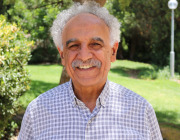Abstract:
Background: In this study, we examined the associations of parents' and adolescents' exposure to community violence (CV) with externalizing and internalizing symptoms among adolescents aged 14–18, and the mediating role of some parental factors in these relationships. The study was based on the secondary trauma perspective in explaining parents' exposure to CV and its implications on their offspring. Method: Self-administered questionnaires were filled out by a semi-systematic random sample of 760 Palestinian parent-adolescent dyads from Israel. Results: The findings revealed that most of the Palestinian adolescents had witnessed CV, and more than one-third of them directly experienced such violence during their lifetime. Most of the parents had also witnessed such violence, and almost half of them directly experienced such violence during their lifetime. For parents and adolescents, greater exposure to CV was associated with more internalizing and externalizing symptoms among adolescents. Additionally, results of path analysis indicate that parental stress mediated the correlation between the adolescents' direct experience with CV and internalizing and externalizing symptoms, and it mediated the correlation of the parents' direct experience with CV and internalizing and externalizing symptoms among their adolescent offspring. Conclusions: The strengths and limitations of the study and their implications for future research are discussed. The implications of the results for prevention and intervention are also discussed.
Notes:
Funding Information: Neveen Ali-Saleh Darawshy, MSW, is a Ph.D candidate at the Paul Baerwald School of Social Work and Social Welfare, The Hebrew University of Jerusalem, Israel (email:
Nevosh78@gmail.com ). Muhammad M. Haj-Yahia, pH.D., is Gordon Brown Chair and Professor of social work at the Paul Baerwald School of Social Work and Social Welfare, The Hebrew University of Jerusalem, Israel (email:
m.hajyahia@mail.huji.ac.il ). This article is part of a series of three articles that compose the first author's doctorate dissertation. The study has been partially funded by Faye Kaufman Memorial Prize and the Jean & Fanny Tolkowsky-Gutman Foundation, both at the Hebrew University of Jerusalem. The authors would also like to extend their sincere gratitude to many students and faculty members at Al-Qasemi Academic College of Education, Beit Berl College, and Sakhnin College for their invaluable help and support in collecting the data for this study. Furthermore, the authors would like extend their gratitude to Prof. Abigail Gewirtz, Prof. Miriam Schiff, and Prof. Danny Brom, Mrs. Ali-Saleh Darawshy's academic committee for her doctorate studies, for their constructive review of and insightful comments on an earlier version of this manuscript. Publisher Copyright: © 2018 Elsevier Ltd

